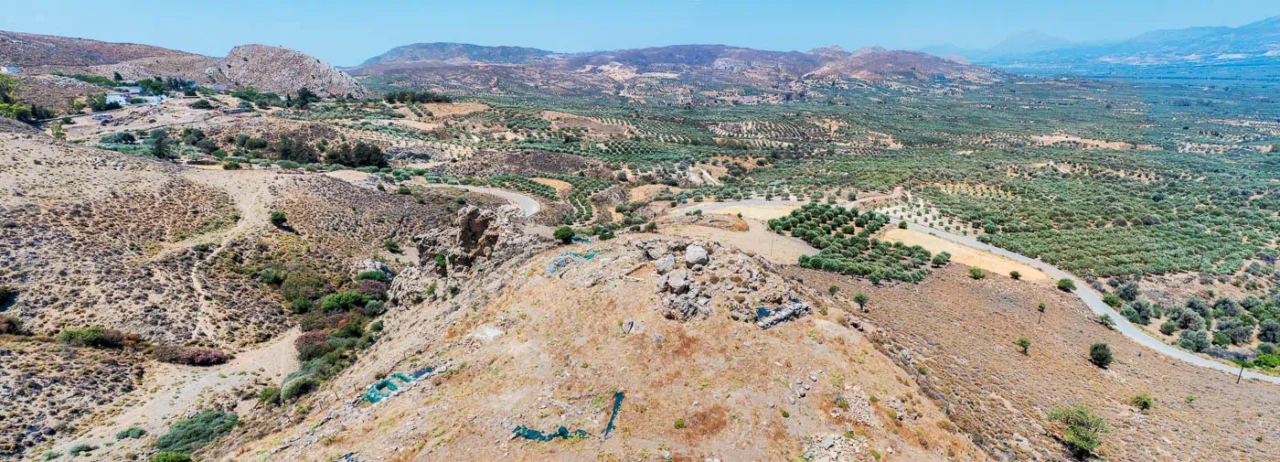
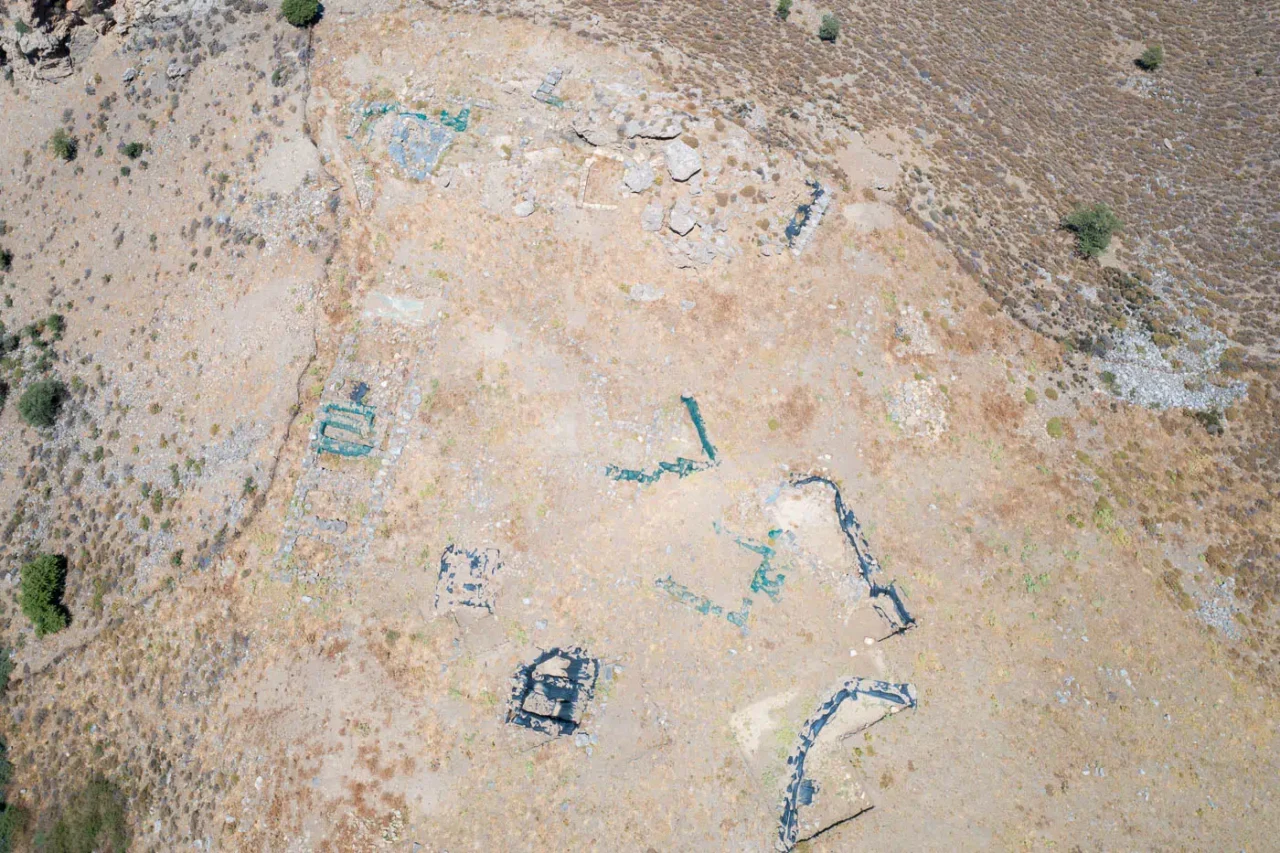
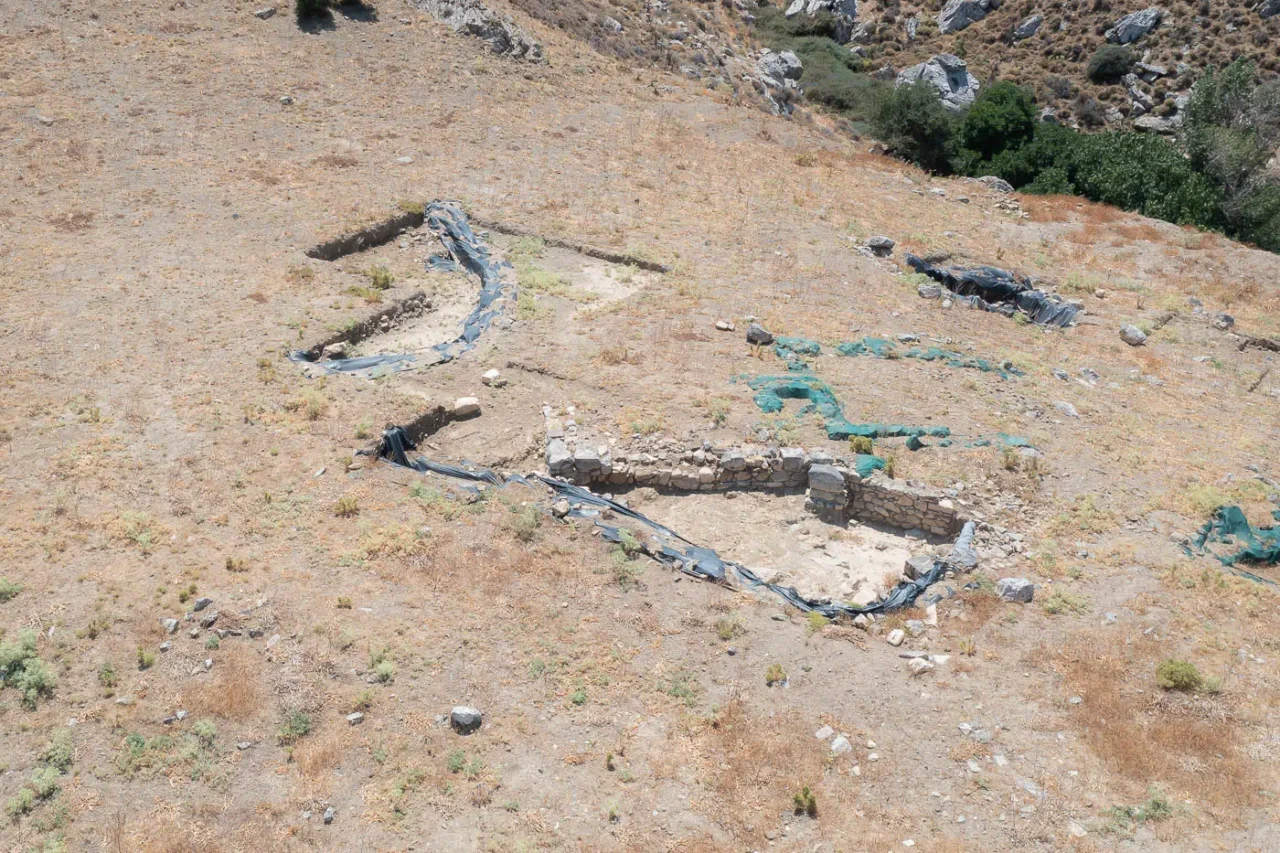
Koumasa, an important Minoan archaeological site in southern Crete, is located about 15 km south of Gortyn, at the northern base of the Asterousia Mountains. The site is significant for its Prepalatial cemetery, excavated in the early 20th century, and its associated Minoan settlement, which has been the subject of renewed investigation in recent years, led by archaeologist and Professor at the University of Heidelberg, Dr. Diamantis Panagiotopoulos. Koumasa provides valuable insights into the lives and customs of the Minoans during the Prepalatial period, a time of significant cultural and social development on the island. The site’s location in the Asterousia Mountains, a region rich in natural resources, suggests that it played a crucial role in the economic and political landscape of the time. The proximity of Koumasa to other Minoan sites in the Asterousia region, such as the peak sanctuaries on Kofinas and Troullos, as well as the coastal settlements at Leben, indicates a well-connected network of communities that interacted and exchanged goods and ideas.
The Cemetery at Koumasa
The Prepalatial cemetery at Koumasa, initially excavated by Stephanos Xanthoudides between 1904 and 1906, consists of three circular tholos tombs, a square tomb, and a circular ossuary. The tholos tombs, characteristic of Minoan burial architecture, are beehive-shaped chambers constructed with large stones. Xanthoudides’ excavations uncovered a remarkable collection of artifacts, including a clay figurine depicting a bull-leaping scene, Cycladic figurines, stone offering tables, and gold jewelry. These findings attest to the wealth and sophistication of the Minoan people who used the cemetery.
In the final layer of the excavation, a large number of human bones were found. Half of these were sent to the Heraklion Archaeological Museum, but unfortunately, they were subsequently lost. The remaining bones stayed at the site and were later excavated by Panagiotopoulos’ team in 2012 and beyond. This meticulous work spanned several excavation seasons and resulted in the discovery of additional valuable artifacts, including gold jewelry, ivory objects, and more Cycladic figurines, further enriching our understanding of the site’s significance.
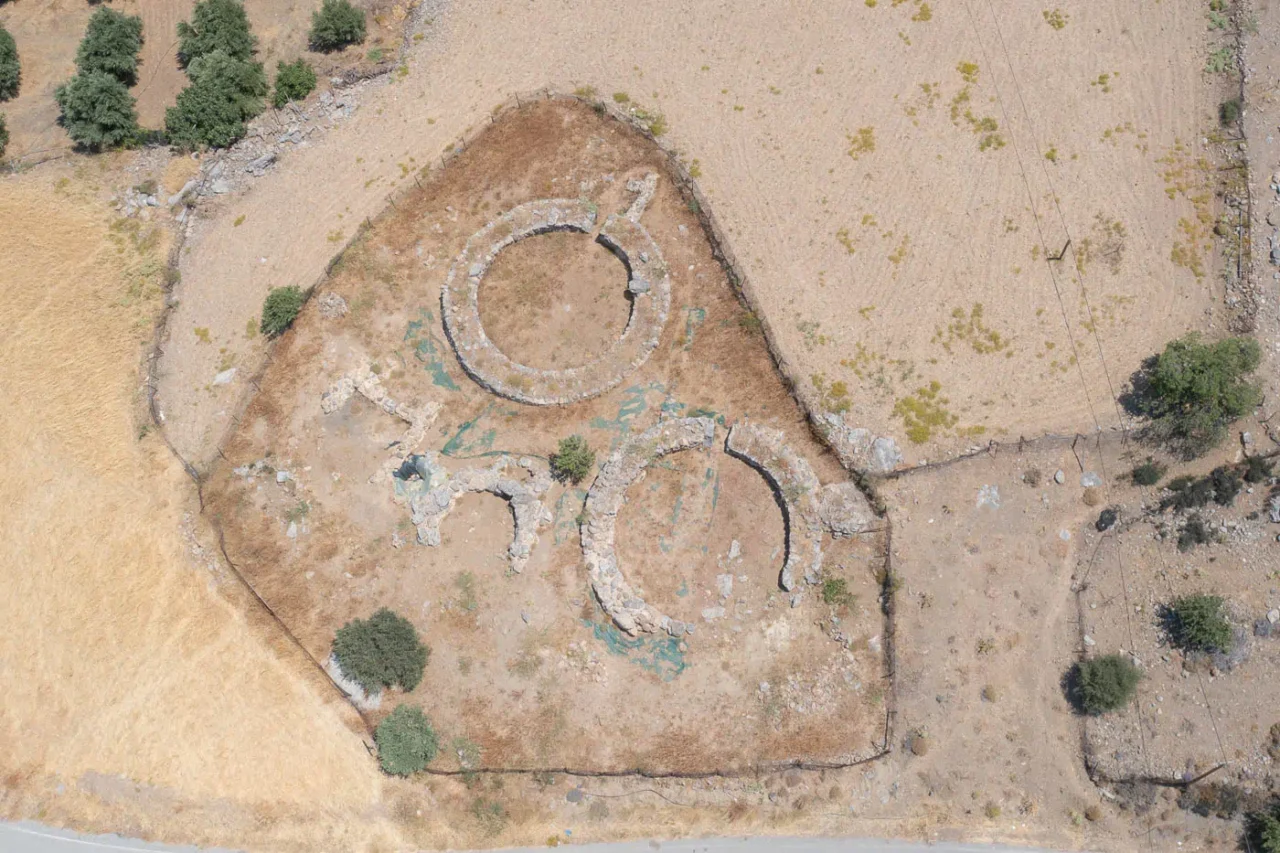
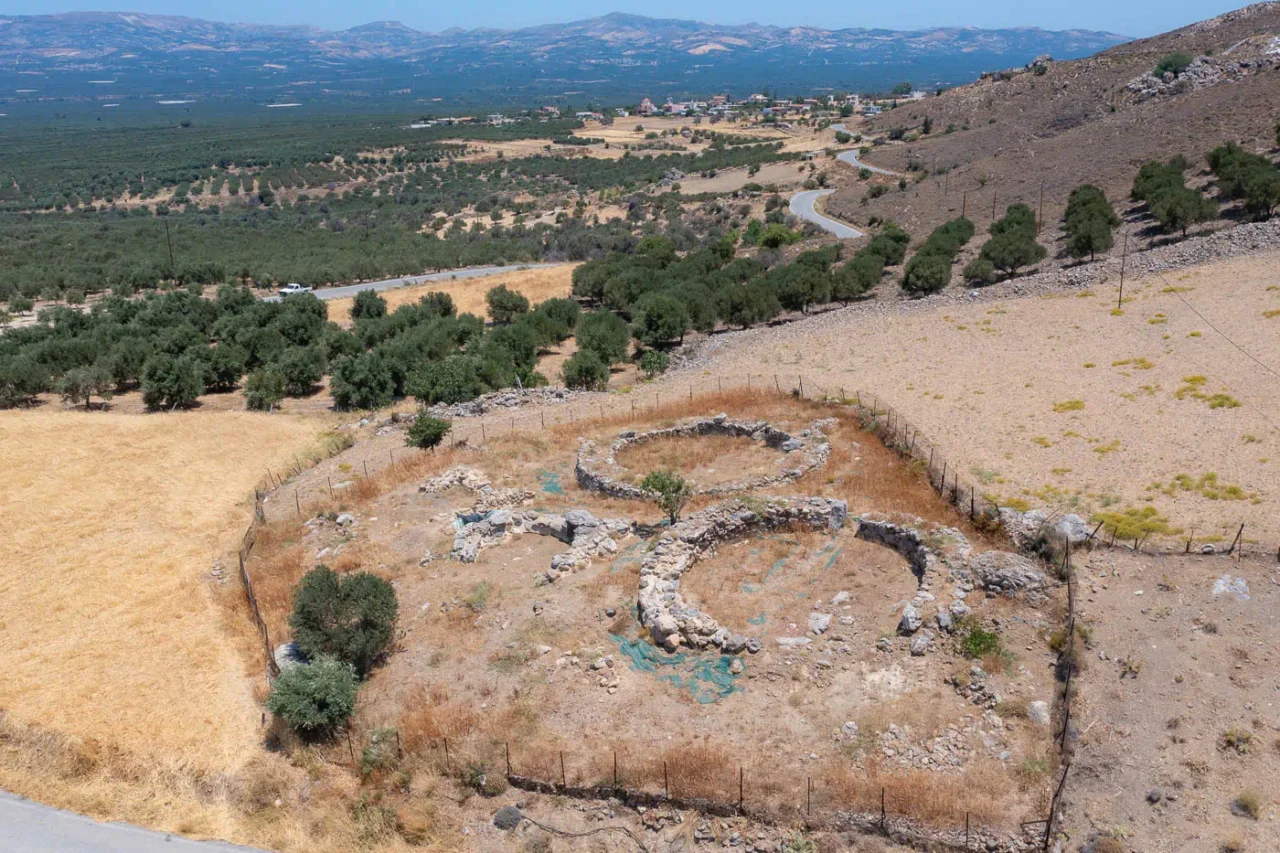
The Settlement at Koumasa
The Minoan settlement at Koumasa is located on a hill overlooking the cemetery. Xanthoudides initially excavated a small part of the settlement, identifying it as a sanctuary based on the artifacts found there. However, recent excavations led by Panagiotopoulos, starting in 2012, have revealed a more extensive settlement with evidence of domestic and industrial activities. The presence of large walls, some over 1.2 meters thick and extending 25 meters or more, suggests the existence of substantial buildings. These may have included elite residences or administrative structures, indicating a complex social hierarchy within the settlement. The discovery of a Minoan column base in 2018 further underscores the importance of the settlement and its architectural sophistication.
Ongoing Research and Preservation Efforts
The ongoing research at Koumasa aims to uncover more about the daily lives of the Minoans who lived and were buried there. The excavation of the settlement is still in progress, and future discoveries may shed light on the site’s function, social organization, and economic activities. The study of the artifacts and their context will also contribute to our understanding of Minoan culture, technology, and trade networks. To protect the site and its findings from the elements and potential damage, the excavation areas have been covered in several places. This measure ensures the preservation of the archaeological remains for future research and public viewing.
Archaeological Site: Key Points
- Construction Period: Prepalatial period (c. 3200-2000 BC)
- Location: 15 km south of Gortyn, Asterousia Mountains, Crete
- Historical Significance: Important Minoan settlement and cemetery, providing insights into the social, economic, and religious practices of the Prepalatial period. The site is unique in the region for its close association between a settlement and a cemetery.
- Current Status: Partially excavated, with ongoing research led by Diamantis Panagiotopoulos. The site is protected to preserve the archaeological remains.


There are no comments yet.